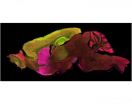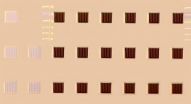(Press-News.org) Would you sacrifice one person to save five? Such moral choices could depend on whether you are using a foreign language or your native tongue.
A new study from psychologists at the University of Chicago and Pompeu Fabra University in Barcelona finds that people using a foreign language take a relatively utilitarian approach to moral dilemmas, making decisions based on assessments of what's best for the common good. That pattern holds even when the utilitarian choice would produce an emotionally difficult outcome, such as sacrificing one life so others could live.
"This discovery has important consequences for our globalized world, as many individuals make moral judgments in both native and foreign languages," says Boaz Keysar, Professor of Psychology at UChicago. "The real world implications could include an immigrant serving as a jury member in a trial, who may approach decision-making differently than a native-English speaker." Leading author Albert Costa, UPF psychologist adds that "deliberations at places like the United Nations, the European Union, large international corporations or investment firms can be better explained or made more predictable by this discovery."
The researchers propose that the foreign language elicits a reduced emotional response. That provides a psychological distance from emotional concerns when making moral decisions. Previous studies from both research groups independently found a similar effect for making economic decisions.
In the new study, two experiments using the well-known "trolley dilemma" tested the hypothesis that when faced with moral choices in a foreign language, people are more likely to respond with a utilitarian approach that is less emotional.
The first experiment presented participants with the "footbridge" scenario of the trolley dilemma. Study participants are asked to imagine they are standing on a footbridge overlooking a train track when they see that an on-coming train is about to kill five people. The only way to stop it is to push a heavy man off the footbridge in front of the train. That action will kill the man, but save the five people. In other words, study participants were faced with the dilemma of choosing between actively sacrificing one person, which violates the moral prohibition against killing, or by inaction allowing five people to die.
The researchers collected data from people in the U.S., Spain, Korea, France and Israel. Across all populations, more participants selected the utilitarian choice — to save five by killing one — when the dilemmas were presented in the foreign language than when they did the problem in their native tongue.
Even with randomizing the participants' language groups, "those using a foreign language were twice as likely to respond with the utilitarian approach that is more in the service of the common good of saving more people," said lead author Albert Costa from the Center of Brain and Cognition, Universitat Pompeu Fabra, Barcelona. Costa is currently a visiting professor at UChicago.
The second experiment included a version of the dilemma that is less emotional. In this dilemma, the trolley is headed towards the five men, but you can switch it to another track where it would kill only one man. People tend to be more willing to sacrifice the one man by pulling a switch than by pushing him off the footbridge because the action is less emotionally intense, the researchers note. The language of presentation did not affect participants' decisions in this dilemma; with either language, the vast majority of people prefer the utilitarian option in this less emotional scenario.
The team evaluated data from 725 participants, including 397 native speakers of Spanish with English as a foreign language, and 328 native speakers of English with Spanish as a foreign language. Each participant received the two dilemmas either in their native language or a foreign one. When presented with the less emotional scenario, more than 80 percent of participants preferred to divert the train and that percentage remained high in their native and foreign language. On the other hand, when presented with the more emotional scenario, people are once again significantly more likely to sacrifice one to save five when making the choice in a foreign language.
Keysar says decisions appear to be made differently when processed in a foreign language. "People are less afraid of losses, more willing to take risks and much less emotionally-connected when thinking in a foreign language."
Co-author Sayuri Hayakawa, a UChicago doctoral student in psychology, says the way we learn the language is key. "You learn your native language as a child and it is part of your family and your culture," she said. "You probably learn foreign languages in less emotional settings like a classroom and it takes extra effort. The emotional content of the language is often lost in translation."
"What this study tells us is that moral judgments can be affected depending on whether the language in which it is presented is a native or foreign one," Costa said. "Awareness of this impact of languages on moral dilemmas is fundamental to making more informed choices."
INFORMATION:
The study is published online by PLOS ONE.
Using a foreign language changes moral decisions
2014-04-28
ELSE PRESS RELEASES FROM THIS DATE:
UEA research shows bacteria combat dangerous gas leaks
2014-04-28
Bacteria could mop up naturally-occurring and man-made leaks of natural gases before they are released into the atmosphere and cause global warming - according to new research from the University of East Anglia.
Findings published today in the journal Nature shows how a single bacterial strain (Methylocella silvestris) found in soil and other environments around the world can grow on both the methane and propane found in natural gas.
It was originally thought that the ability to metabolize methane and other gaseous alkanes such as propane was carried out by different ...
How to create nanowires only 3 atoms wide with an electron beam
2014-04-28
Junhao Lin, a Vanderbilt University Ph.D. student and visiting scientist at Oak Ridge National Laboratory (ORNL), has found a way to use a finely focused beam of electrons to create some of the smallest wires ever made. The flexible metallic wires are only three atoms wide: One thousandth the width of the microscopic wires used to connect the transistors in today's integrated circuits.
Lin's achievement is described in an article published online on April 28 by the journal Nature Nanotechnology. According to his advisor Sokrates Pantelides, University Distinguished Professor ...
First disease-specific human embryonic stem cell line by nuclear transfer
2014-04-28
NEW YORK, NY (April 28, 2014) – Using somatic cell nuclear transfer, a team of scientists led by Dr. Dieter Egli at the New York Stem Cell Foundation (NYSCF) Research Institute and Dr. Mark Sauer at Columbia University Medical Center has created the first disease-specific embryonic stem cell line with two sets of chromosomes.
As reported today in Nature, the scientists derived embryonic stem cells by adding the nuclei of adult skin cells to unfertilized donor oocytes using a process called somatic cell nuclear transfer (SCNT). Embryonic stem cells were created from one ...
UCLA scientists hunt down origin of Huntington's disease in the brain
2014-04-28
The gene mutation that causes Huntington's disease appears in every cell in the body, yet kills only two types of brain cells. Why? UCLA scientists used a unique approach to switch the gene off in individual brain regions and zero in on those that play a role in causing the disease in mice.
Published in the April 28 online edition of Nature Medicine, the research sheds light on where Huntington's starts in the brain. It also suggests new targets and routes for therapeutic drugs to slow the devastating disease, which strikes an estimated 35,000 Americans.
"From ...
The scent of a man
2014-04-28
Scientists' inability to replicate research findings using mice and rats has contributed to mounting concern over the reliability of such studies.
Now, an international team of pain researchers led by scientists at McGill University in Montreal may have uncovered one important factor behind this vexing problem: the gender of the experimenters has a big impact on the stress levels of rodents, which are widely used in preclinical studies.
In research published online April 28 in Nature Methods, the scientists report that the presence of male experimenters produced a ...
Mount Sinai scientists identify first gene linked to heart muscle disease in children
2014-04-28
Scientists at Icahn School of Medicine at Mount Sinai, along with collaborators at institutions in India, Italy, and Japan, have identified the first gene linked to childhood-onset familial dilated cardiomyopathy (DCM), one of the most common heart muscle diseases in children. It is a progressive and potentially fatal heart condition resulting from an enlarged and weakened heart muscle.
The study, published in Nature Genetics, also revealed a link between DCM and excessive activation of the protein, mTOR. Currently, there are several existing FDA-approved blocking ...
Viral 'parasites' may play a key role in the maintenance of cell pluripotency
2014-04-28
In a study published in Nature Genetics, scientists from the RIKEN Center for Life Science Technologies in Japan, in collaboration with the RIKEN Center for Integrative Medical Sciences, the University of Copenhagen and the Joint Genome Institute (Walnut Creek, California) have discovered that "jumping DNA" known as retrotransposons—viral elements incorporated into the human genome—may play a key role in the maintenance of pluripotency, the ability of stem cells to differentiate into many different types of body cells.
This story is part of a fundamental rethinking taking ...
Researchers identify mechanism of cancer caused by loss of BRCA1 and BRCA2 gene function
2014-04-28
BOSTON – Inherited mutations in the BRCA1 or BRCA2 tumor suppressor genes are by far the most frequent contributors to hereditary cancer risk in the human population, often causing breast or ovarian cancer in young women of child-bearing age. Attempts to test the role that the BRCA genes play in regulating a repair process associated with genome duplication have proven frustratingly difficult in living mammalian cells.
Now investigators at Beth Israel Deaconess Medical Center (BIDMC) report a new mechanism by which BRCA gene loss may accelerate cancer-promoting chromosome ...
Multilayer, microscale solar cells enable ultrahigh efficiency power generation
2014-04-28
Researchers at the University of Illinois at Urbana-Champaign use a printing process to assemble tiny cells into multilayer stacks for extraordinary levels of photovoltaic conversion efficiency.
As an energy source, the Sun has always been a dependable provider. Although it freely shines on everyone, the ability to capture and convert the Sun's abundant energy is anything but free. However, new technologies aimed at achieving "full spectrum" operation in utility-scale photovoltaics may soon make solar energy a viable option.
"A few simple ideas in materials science ...
Overlooked cells hold keys to brain organization and disease, UCSF study shows
2014-04-28
Scientists studying brain diseases may need to look beyond nerve cells and start paying attention to the star-shaped cells known as "astrocytes," because they play specialized roles in the development and maintenance of nerve circuits and may contribute to a wide range of disorders, according to a new study by UC San Francisco researchers.
In a study published online April 28, 2014 in Nature, the researchers report that malfunctioning astrocytes might contribute to neurodegenerative disorders such as Lou Gehrig's disease (ALS), and perhaps even to developmental disorders ...



